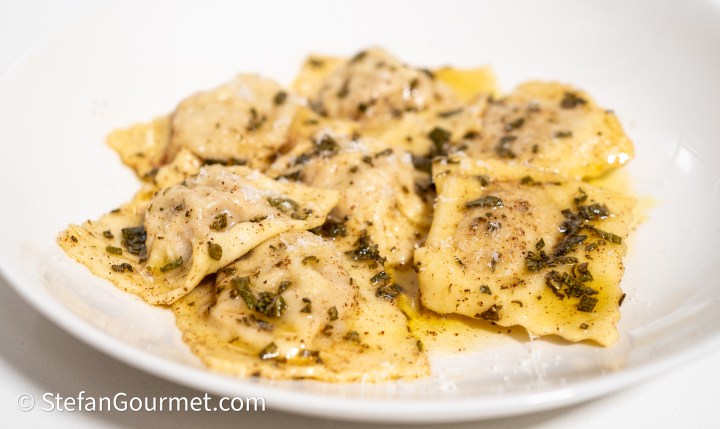
This ravioli dish is one of my favorite ‘battle horses’, an Italian term (cavallo di battaglia) for a dish that is always a success when I prepare it for guests. I also prepared this for my friends Robert and Melvin when they came over for dinner for the first time in early 2011. Robert liked these ravioli so much that they brought tears to his eyes, and from then on these ravioli are referred to as “cry ravioli”. The filling is the same as tortellini from Bologna, which are usually served in a meat broth, or with ragù. Here I’ve made ravioli instead of tortellini (larger and less work), and serve them with a simple but delicious sauce of butter and fresh sage. The recipe has been on my blog since 2012, but it was one of five ravioli recipes in this post and therefore somewhat hard to find. As these ravioli are so good, it is time to give them their own post. There is only one thing that I have improved since then, and that is to sear the pork before dicing it. This makes it much easier to brown the pork, as you can turn a whole slice of pork at once rather than having to turn all those cubes, and cubed pork releases more juices, making it more difficult to sear rather than boil the pork.
Ingredients
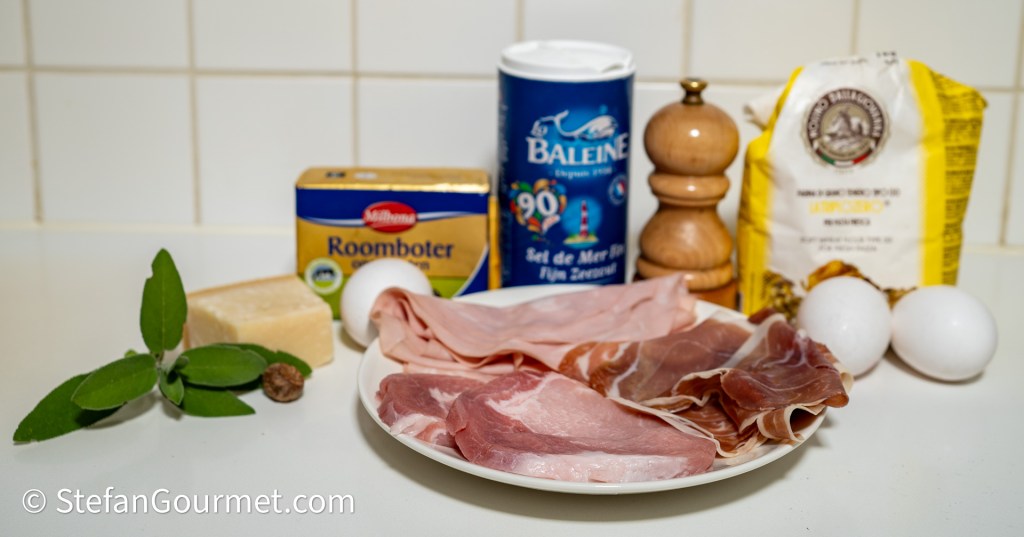
Makes about 30 ravioli, serves 4 to 6 as a primo piatto
For the filling
- 100 grams pork loin
- 50 grams prosciutto (preferably Parma)
- 50 grams mortadella
- 50 grams freshly grated parmigiano reggiano
- 1 egg
- dash of fresly grated nutmeg
- 1 Tbsp butter
- salt and freshly ground black pepper
For the pasta and to finish the dish
- fresh pasta dough from 2 eggs and 200 grams (1 1/3 cup) Italian 00 flour
- 100 grams butter
- 4 Tbsp minced fresh sage
- freshly grated parmigiano, for garnish
Instructions
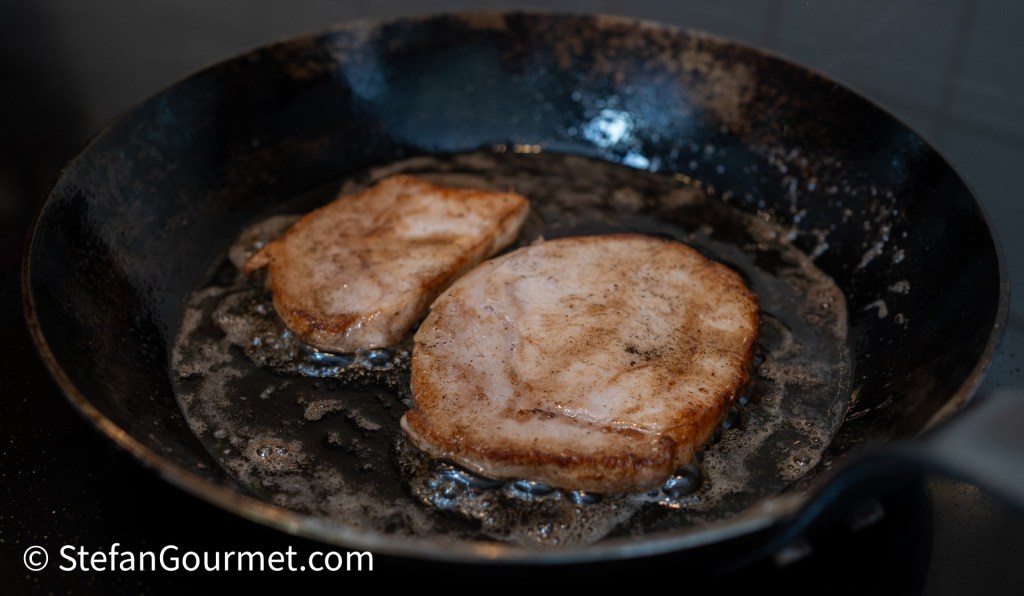
To make the filling, melt 1 tablespoon of butter in a small frying pan. Pat the pork loin dry with paper towels, and sear the pork on both sides over medium-high heat. This is mostly to develop the flavor, but also to cook the pork.
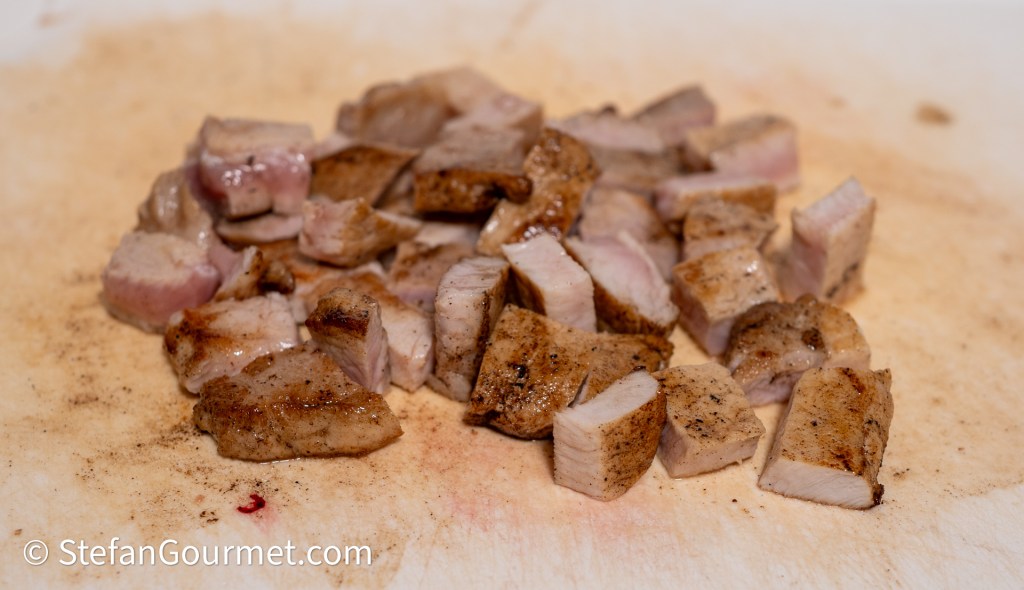
Reserve the drippings in the pan to add to the filling later. Dice the pork.
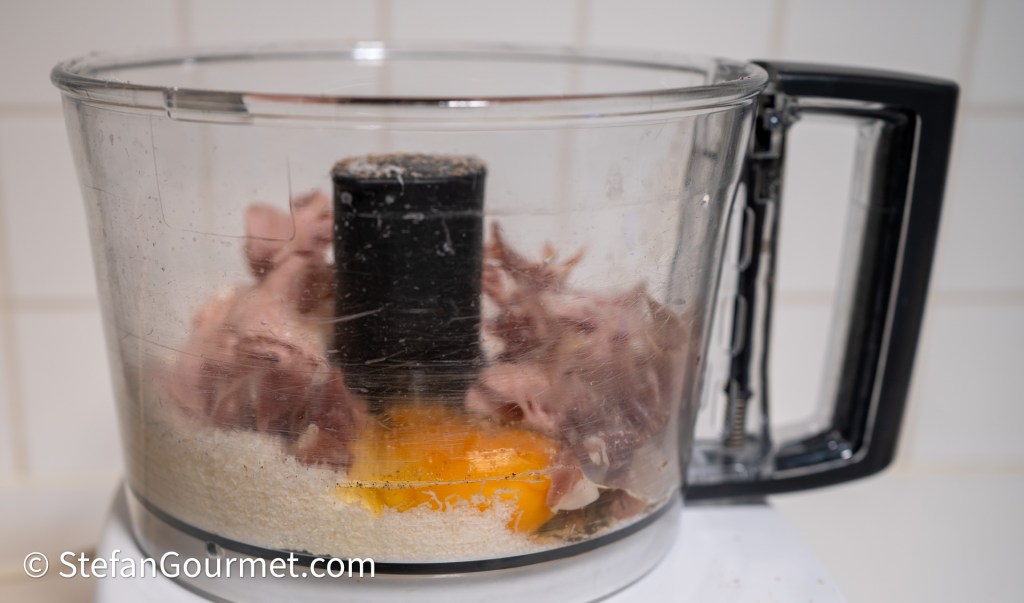
Place the diced pork in the bowl of a food processor together with the reserved drippings from searing the pork, 1 egg, 50 grams of chopped prosciutto, 50 grams of chopped mortadella, 50 grams of freshly grated parmigiano, a dash of freshly grated nutmeg, and some freshly ground black pepper.
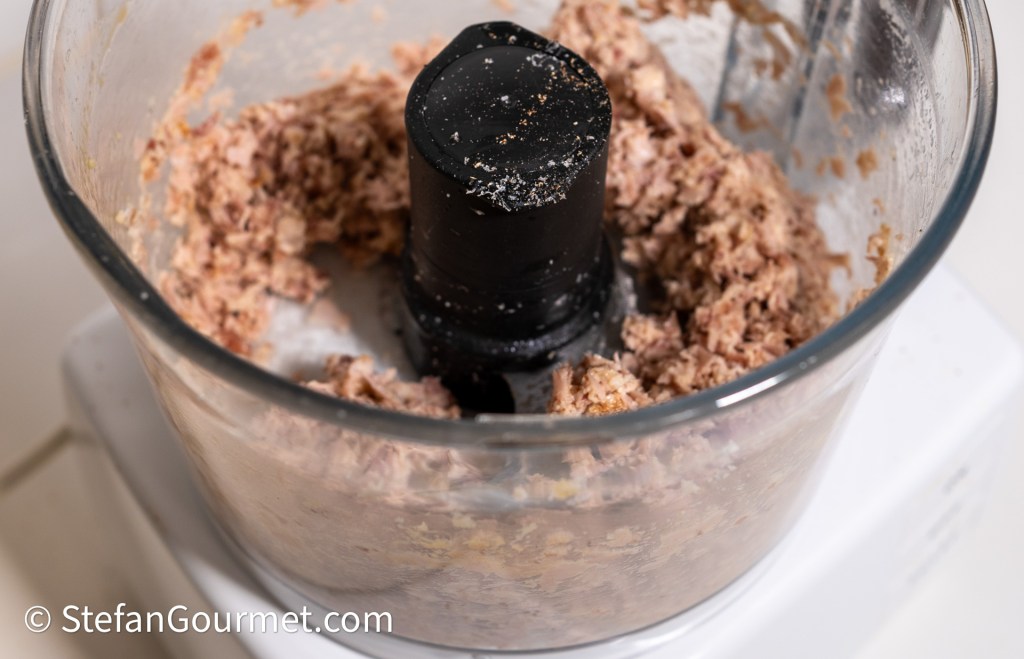
Pulse until the filling has a homogeneous consistency. It should be slightly coarse, not a smooth puree. This is why it is better to use the pulse. Scrape down the sides of the bowl with a spatula as necessary. Taste and adjust the seasoning with salt and freshly ground black pepper, remembering that the filling when you taste it by itself should be seasoned a bit more strongly than you think it should be.
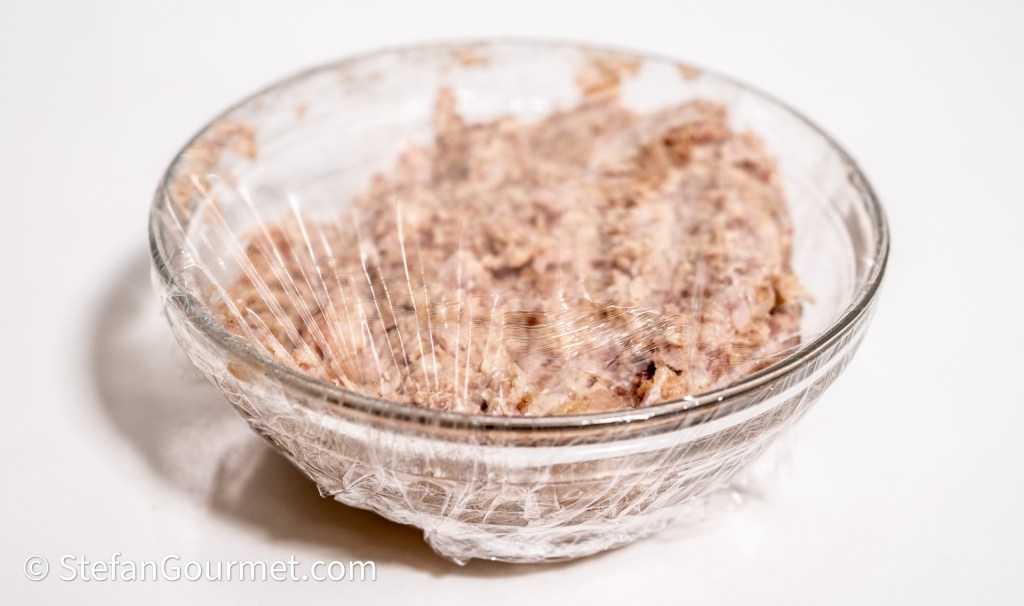
Refrigerate the filling to allow it to firm up.
In the meantime, make the pasta dough using my instructions, and allow that to rest in the refrigerator for at least half an hour before continuing.
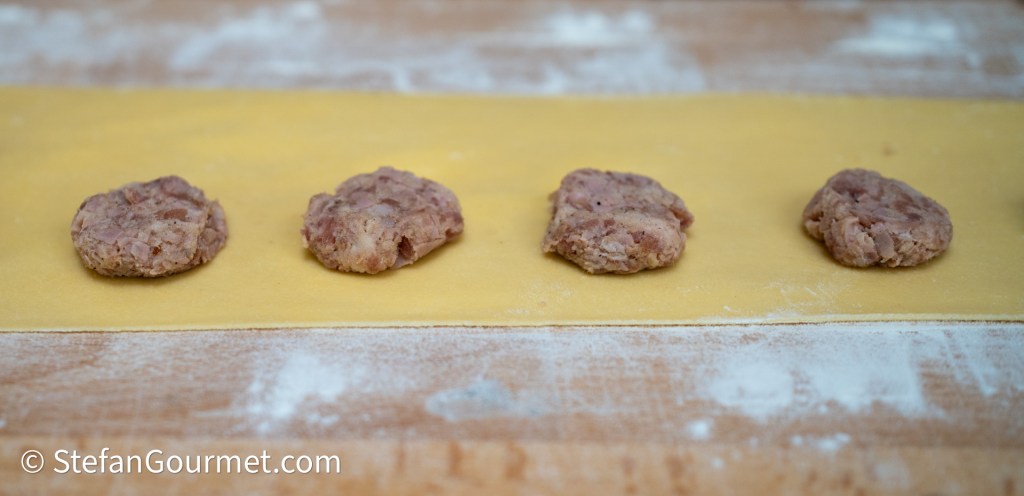
When the dough and filling have both rested sufficiently, roll out the pasta dough thinly, and make ravioli according to my instructions.

You will obtain about 30 ravioli if you use about 2 teaspoons of filling for each raviolo.
The dish can be prepared in advance up to this point. Refrigerate the ravioli in case of a high ambient temperature or if you are going to cook them more than a couple of hours later.
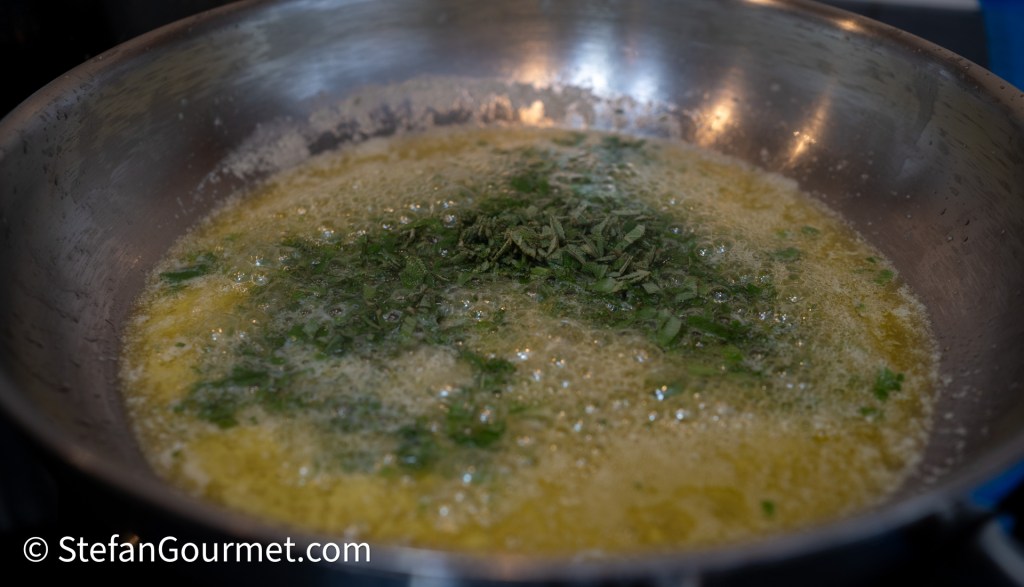
To serve the dish, bring a large pot of water to a boil. In the mean time, mince fresh sage leaves to obtain about 4 tablespoons (1/4 cup). Melt 100 grams of butter in a wide frying pan over medium heat, preferably one with curved sides as that will make it easier to toss the ravioli later. When the butter has melted, add the sage, and stir. Cook until the sage is starting to crisp up and the butter is starting to turn golden brown. Turn off the heat.
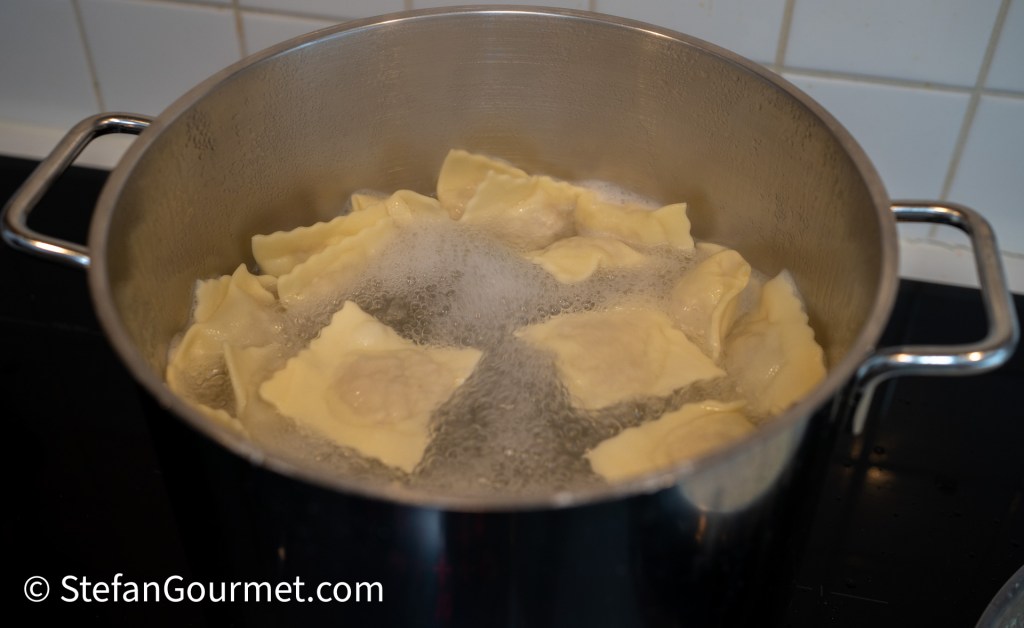
When the water boils, add salt and the ravioli. Boil them for 2 minutes only.
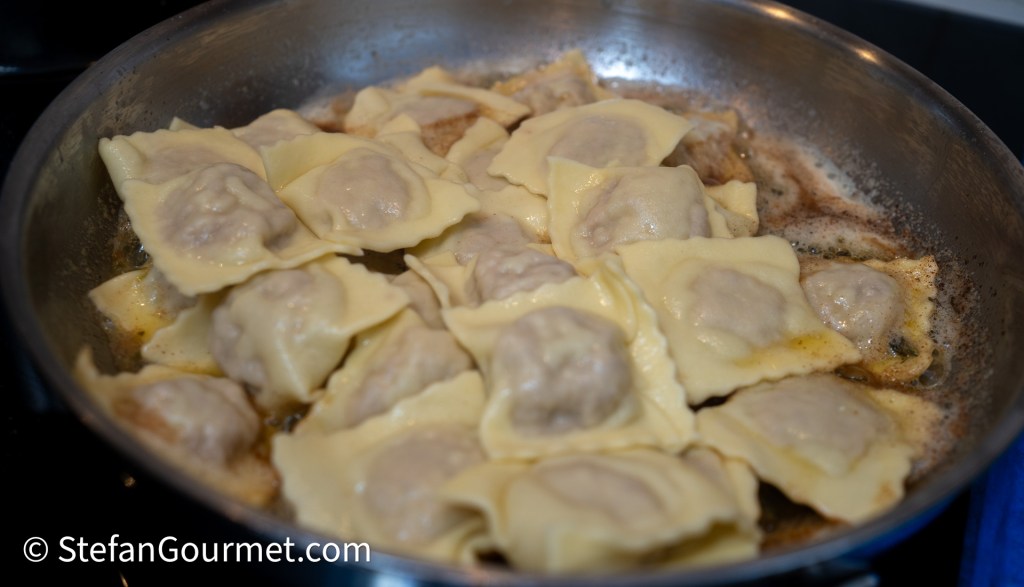
After 2 minutes, lift them from the pot with a strainer, and add them to the butter and sage.
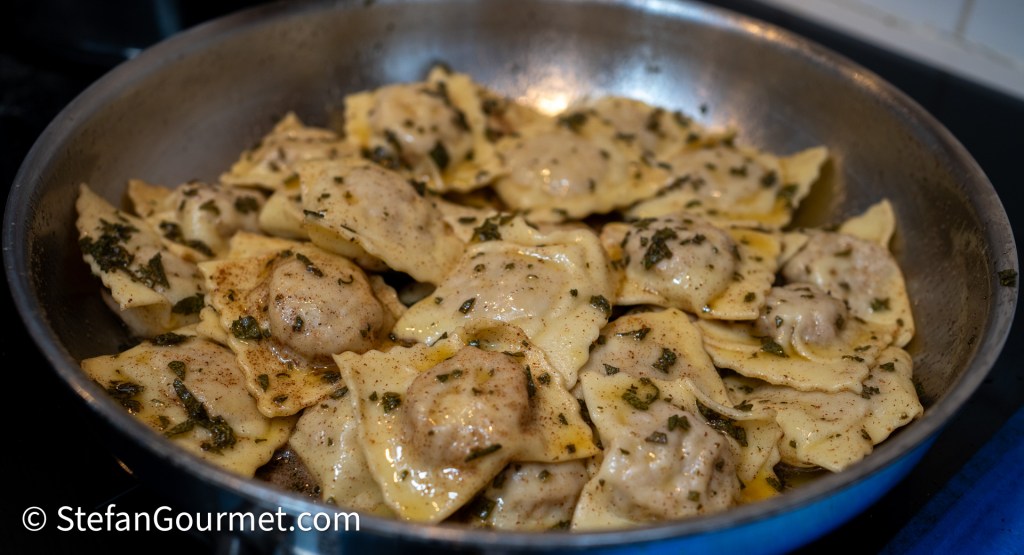
Once you have added all of them, shake the pan to cover the ravioli all over with butter and sage. This will only work with a frying pan with round sides; otherwise you will have to use a spatula.

Serve the ravioli at once on preheated plates. Spoon any butter and sage that remains behind in the pan over the ravioli, and garnish with freshly grated parmigiano.
Wine pairing
This is outstanding with a full-bodied white Verdicchio from the Marche region in Italy, a Castelli di Jesi Verdicchio Classico Riserva, or a Verdicchio di Matelica Riserva. “Riserva” means that the wine has been aged for added body, roundness, and complexity. If you prefer a red, a lighter Barbera would be a good choice. Barbera comes in different styles from light to very powerful with lots of acidity, alcohol, oak, and tannins. The latter would be way too powerful for this dish. It is a good sign if the Barbera only has 13% alcohol by volume or so.


I love the term, battle horses! It’s nice to have an arsenal of recipes that we can rely on and prepare without worry.
LikeLiked by 1 person
Qui, è proprio un piatto delle feste. Complimenti!
LikeLiked by 1 person
Thanks for this. I have been making this regularly. It’s a favourite way to use up small leftover quantities of roast pork.
LikeLiked by 1 person
That’s great to hear and that is a very good use for leftover roast pork.
LikeLike